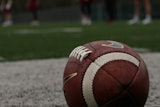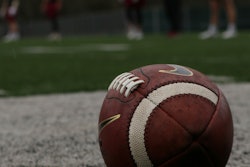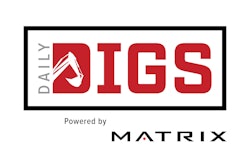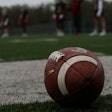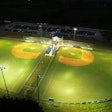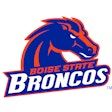Stadiums and athletic centers epitomize a core mission of education: creating and fostering community. They are centers of campus, providing the thread that connects different groups and generations, an essential backdrop to the community college and K-12 experience. However, getting them funded requires new designs that embrace a multiplicity of needs while serving many different communities.
“Garnering the support to build a facility is tougher than ever,” says Arash Izadi, director of Sport + Recreation at LPA. “Every dollar needs to be stretched and maximized.”
Schools can’t afford to build singular facilities that meet the needs of only a select few. In the current climate, many well-established schools are dropping selected sports as costs escalate, enrollments decrease and interests change. Administrators are working to attract nontraditional users and create more inclusive facilities.
Building in today’s uncertain times requires concepts with enough foresight and flexibility to tackle multiple challenges and add value and revenue in novel ways. To make budgets work, sports stadiums and athletic centers must be sustainable and must create efficiency and embrace a multisport and multifunction approach. Schools increasingly need stadiums and arenas that provide spaces for programming and events for the entire campus and community, in addition to addressing student health and wellness and the needs of athletics.
At Victor Valley College in Victorville, a high-desert community in southeast California, a new combination stadium and educational events center showcases how multipurpose facilities can accomplish more. School leaders needed to upgrade the field for their top-ranked football program, but they also wanted to create a multiuse facility for student, institutional and community events.
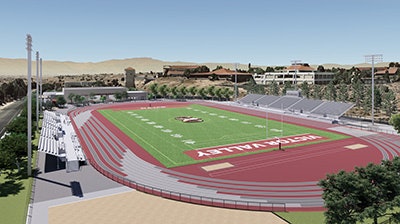 Victory Valley College in Victorville, Calif.
Victory Valley College in Victorville, Calif.
The resulting complex blends a state-of-the-art track-and-field complex with alumni and donor facilities and an integrated convention and events center, focusing on the synergies among uses. High-tech features for the athletic programs include synthetic surfacing materials that can lower the temperature of the playing field by 10 to 30 degrees and help mitigate or reduce concussion risk. Guests at lectures or community events can take advantage of a new concourse that overlooks the field. The deliberate choice to fully integrate the facilities programming with the community and college, and not place athletics in a totally separate sphere, also creates more continuity within the campus landscape.
Funding for athletic facilities becomes much more palatable if they serve larger, more diverse student populations, as well as community needs. If bonds are the primary funding source, members of the community will have the final say on a project. Some states, such as football-obsessed Texas, impose strict guidelines on how money is spent. General bond funds can no longer be used for dedicated sports facilities, unless they are specifically funded for that purpose. Gathering the financial and political support for such significant investments requires coalition building and a clear focus on the value the facilities can bring to a campus.
New facilities don’t need to upset existing campus layouts to achieve the goals; they often work best when strategically integrated, like a new downtown development that links neighborhoods. In Torrance, California, sports powerhouse El Camino College’s football stadium was a classic bowl-shaped venue, reminiscent of the earliest wave of modern stadium design. A recent LPA stadium replacement project of the historic facility, now called the Athletic Education Fitness Complex, maintained the campus’ mid-century style, while adding contemporary touches. In addition to featuring state-of-the-art lockers and a new grand stairway entrance, the field has been outfitted for track and soccer; a secondary exercise track and soccer field was added next to the main facility, providing workout facilities for athletics, recreation and community use.
“The community is thrilled to get this great new facility,” says Steve Flanagan, Director of Higher Education at LPA. “This was successful because it was built to meet the needs of the college’s academic and athletic programs and the community’s recreational needs.”
The Centinela Valley Union High School District took the novel approach of planning athletic facilities for three high schools at the same time. By taking a comprehensive approach, the district was able to address a wide variety of needs for both the schools and the community, while avoiding duplication and waste. The plan includes practice fields, bleachers, Title IX considerations and facilities for the full spectrum of athletics.
“A holistic approach to planning really pays dividends,” Izadi says. “You can create facilities that address a wide variety of needs and will serve for many generations.”
Every campus presents unique challenges and opportunities. For Alamo Heights High School in San Antonio, Texas, architects and designers needed to be able to fit the sports complex and a long list of programming goals onto a small footprint. The final design wrapped an entirely new field house and grandstands around an existing education building, using a spatial solution to fit more activities within a relatively small space.
For administrators, the pandemic only adds to the complexities of the facilities design process. Architects and designers have devised new ways to create public gathering spaces—nodes of campus life—that can help support evolving public health standards, Izadi says. Funneling people through multiple entries and exits, incorporating physical spacing into high-traffic gathering spots, laying out universal locker rooms with a heightened focus on privacy and focusing on ventilation and efficient HVAC systems can all help refine how a new athletic center and gathering space can safely function in the new environment.
Campuses and communities will always crave these kinds of spaces; the designs simply need to evolve, Izadi says. Strengthening town-and-gown relationships—whether to generate revenue, create financial or technological collaborations or simply build community—will be all the more important in the coming years. The pandemic has made it clear that facilities that teach collaboration and teamwork and help us maintain our physical and mental well-being are more important than ever. These new requirements mean that architects and campus planners can no longer design facilities the way they did just a few years ago.
Some schools may be tempted to pause such projects. But Izadi argues that in these uncertain times efficient, multifunction facilities that address the needs of both schools and communities are vital.
“Arguably, we can do virtual classes and create learning environments without a physical classroom,” Izadi says. “But athletic and recreational facilities are the reasons people want to go back to their campus. These are the facilities that unite the community.”













